Scholars call for more diverse and inclusive int’l academia
Author : CHEN MIRONG Source : Chinese Social Sciences Today 2022-07-29
Seeking to publish in top international journals is an effective way for social scientists across the world to boost their career development and communicate new knowledge to a wider scope. However, the treatment they receive depends on their geography. In a recent article published on “Social Science Space,” Amon Barros and Rafael Alcadipani, both professors at Fundação Getulio Vargas’s Sao Paulo School of Business Administration in Brazil, examined invisible challenges scholars from the “periphery” face when they submit publications to top international journals.
Core-periphery divide in academia
The core-periphery theory was first proposed by the Dependency School of the fields of international relations and development economics in the 1960s. According to the theory, the world economy is divided into a rich core and a poor periphery.
Based on the core-periphery model, American sociologist Immanuel Wallerstein creatively supplemented the concept “semi-periphery” in his world systems theory after considering the real conditions of many countries positioned between the core and the periphery. Semi-peripheral countries, including South Korea, Brazil, Italy, and Hungary, to name just a few, refer to nations that are subject to the control of some core countries to a certain extent.
The core-periphery distinction also applies within international academia. Barros and Alcadipani told CSST that the US, the UK, and some countries of the EU, would be at the center of knowledge production and dissemination, while others are generally in the periphery. Noticing that global academia is increasingly Anglophone and centered around debates stemming from countries in the so-called Global North, they warned that the divide can negatively impact societies which face problems that are not prioritized.
In an interview with CSST, Dr. Márton Demeter, an associate professor of social communication at the National University of Public Service in Hungary, attributed the marginalization of the relative Global South in academia, superficially, to the dominance of English, unequally distributed resources, the almost exclusive Western share of international publishing houses, and so on. However, he said “intellectual racism,” as he termed it, is a much more fundamental phenomenon.
“Intellectual racism means that the Global North is considered to accumulate more academic knowledge, in the form of better universities, better journals, better associations, better conferences and, of course, better research,” Demeter explained, adding that this is a “core narrative,” shared by not just the vast majority of Western scholars but also by those Global South scholars that he called “centrophils.”
Truth of international academia
In top international journals, peripheral scholars are much less represented than their counterparts from core countries. Take economics as an example. In 2019, Italian economist Magda Fontana et al. built a database using information from the ISI Web of Science and JSTOR Digital Library, which included 322,279 articles, 215,203 unique authors, and more than 10,000 journals over the period 1985–2016.
Based on this database, economics professors Jacob Greenspon and Dani Rodrik, from Harvard Kennedy School, discovered that the representation of authors from peripheral countries is consistently low in global economic journals, probably suggesting that these countries remain excluded from the profession’s top-rated international journals.
“The term ‘international’ is severely biased in an academic context,” Demeter said. For instance, if a journal has 100% American authorship, it is still considered to be international, and not American. Western, especially American, scholarship is considered international without question, while other parts of the world should always justify why their research is important internationally, otherwise their research remains “ethno-science.”
For many scholars, international recognition means that one is well known in the US and perhaps in some other Western countries. Western problems are considered international by nature; Western research has international relevance and significance. “This is a very hegemonic understanding of internationality,” Demeter said. In his opinion, the more geographically diverse scholars’ research collaboration and research focus is, the more international they are.
In terms of publishing language, it is widely accepted that English is the “lingua franca” of international academia. As management scholars from Brazil, Barros and Alcadipani said that publishing in top management journals primarily demands the mastery of another language and a different writing style. This means they need to perform a “double translation,” not only translating linguistically, but also learning new aesthetics for writing a manuscript. Since writing is entangled with thinking, they often must fracture their epistemological beliefs.
Enhancing diversity and inclusivity
Due to intellectual racism, Demeter said that the struggle for a more diverse and inclusive academia would be very hard. Nonetheless, he suggested truly internationalizing knowledge and contesting the myth by which elite Western universities (very good profit makers) and journals (even better profit makers for publishers) provide better knowledge both theoretically and empirically.
On the micro level, Barros and Alcadipani proposed broadening the database of reviewers in top international journals to bring different cultural and theoretical backgrounds in. Moreover, “minor language mistakes should be tolerated, and editors should be open to other writing formats and try to understand where someone’s research comes from.” They could also assign associate editors to evaluate an idea in its original language before asking for full papers in English to diversify the editor team, Barros and Alcadipani said.
Ye Shengtao made Chinese fairy tales from a wilderness
Ye Shengtao (1894–1988) created the first collection of fairy tales in the history of Chinese children’s literature...
-
How northern ethnicities integrated into Chinese nation
2023-09-18
-
Mogao caves
2023-09-12
-
Mogao Grottoes as ‘a place of pilgrimage’
2023-09-12
-
Time-honored architectural traditions in China
2023-08-29
-
Disentangling the civilizational evolution of China
2023-08-28
-
AI ethics in science fiction
2023-08-23




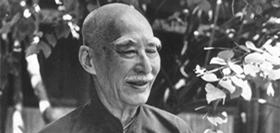
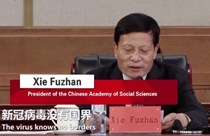
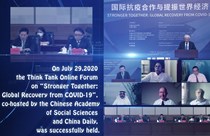
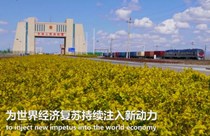
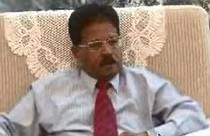
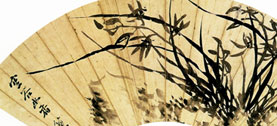

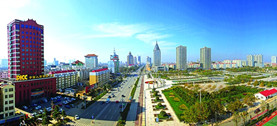


 2011-2013 by www.cssn.cn. All Rights Reserved
2011-2013 by www.cssn.cn. All Rights Reserved